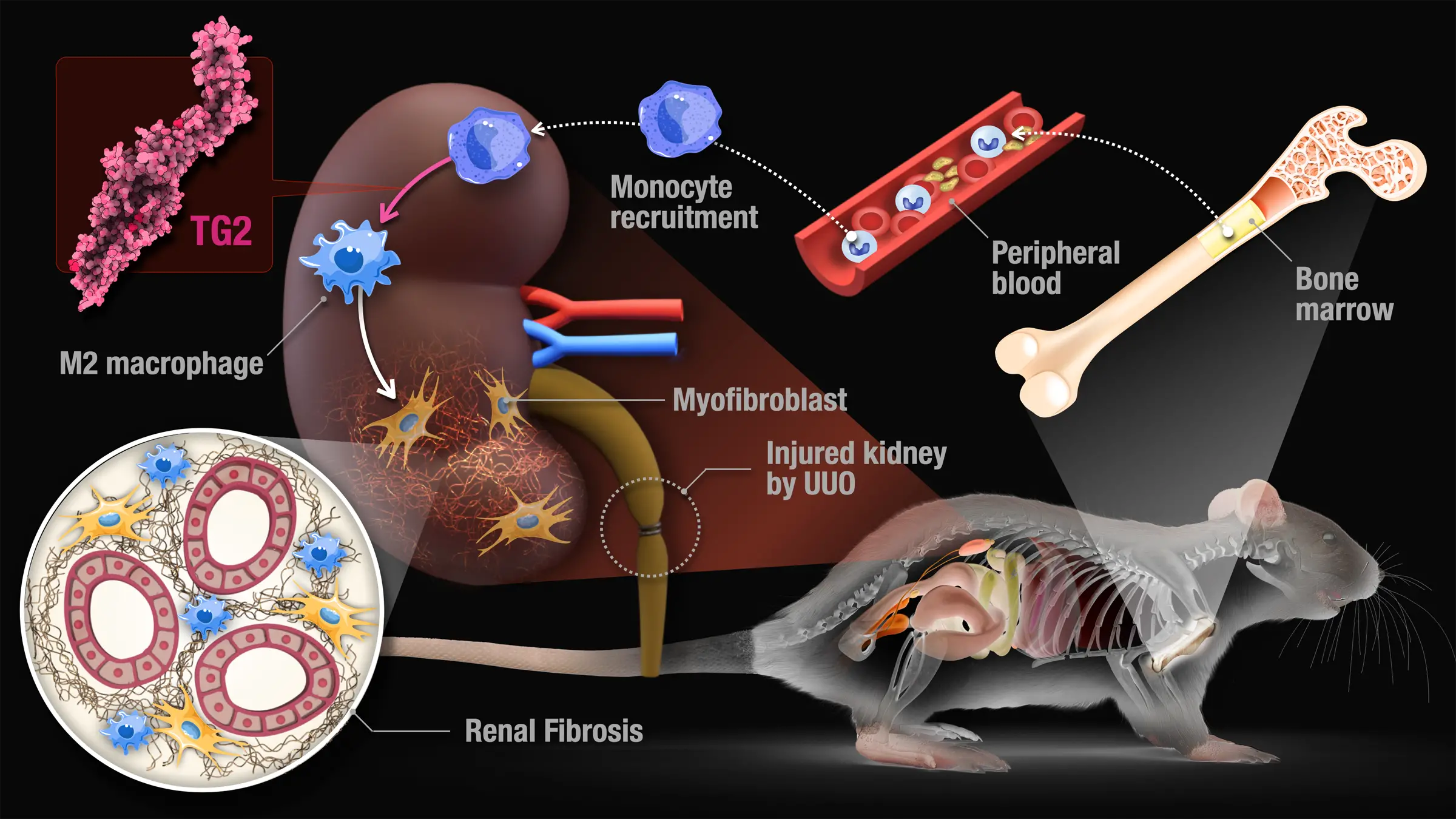Summary of New Findings Suggests a Potential Treatment for Fibrosis:
Researchers at Nagoya University in Japan have identified two enzymes that play a role in macrophage polarization, which affects fibrosis. Kidney fibrosis is a deadly inflammatory disease that results in the death of the kidneys. The imbalance between M1 and M2 macrophages is common in patients with kidney fibrosis, where M2 macrophages excessively increase and secrete fibrosis-promoting factors. Finding the enzyme-associated kidney fibrosis in both mice and human models, researchers are optimistic about targeting the regulation of macrophage function to develop treatments for various diseases caused by an imbalance between inflammation promotion and suppression. TG2 inhibitors, designed for treating celiac disease, could also be repurposed for treating fibrosis.
*****
Enzymes discovered that could hold the key to treating deadly kidney fibrosis
Scientists at Nagoya University in Japan have discovered two enzymes, one called transglutaminase (TG2), that play a key role in macrophage polarization, a factor that contributes to kidney fibrosis. The discovery opens the possibility of translating the findings from mouse models into therapies for human patients and offers hope for this deadly disease.
Understanding the Role of Macrophages in Fibrosis
Kidney fibrosis is a deadly inflammatory disease that causes the kidneys to lose their normal function and become stiff. Macrophages are white blood cells that fight infections and repair tissues that undergo polarization when responding to changes in their microenvironment. This process results in two different types of macrophages: M1 and M2. The latter has anti-inflammatory and tissue-repair capabilities, and its imbalance may be a therapeutic target for many inflammatory diseases, including fibrosis.
TG2 exacerbates renal fibrosis by polarizing M2 macrophages
The researchers found that TG2 is associated with kidney fibrosis in mice and human models. When TG2 cross-links amino acid residues in proteins, it induces another enzyme called arachidonic acid oxidase (ALOX15), which is involved in M2 macrophage induction. Using this process, TG2 activity exacerbates kidney fibrosis by polarizing M2 macrophages.
A possible new treatment for fibrosis
Macrophage polarization, which promotes fibrosis through cross-linking enzymes, has a similar induction mechanism in humans and mice. The researchers hope that targeting the regulation of macrophage function may lead to treatments for various diseases that undergo an imbalance between promoting and suppressing inflammation, such as fibrosis, cancer, and atherosclerosis. Drugs developed for celiac diseases, such as TG2 inhibitors, could be repurposed to treat fibrosis. These inhibitors suppress the pathogenesis of fibrosis models in the kidney, liver, and lung.
Final words
The discovery of enzymes involved in kidney fibrosis in both human and mouse models could be a turning point for treating fibrosis. TG2 exacerbates renal fibrosis by polarizing M2 macrophages, and drugs developed for celiac disease that inhibits TG2, could be repurposed to treat fibrosis. As macrophage polarization involves multiple signaling pathways and regulatory networks that are tightly controlled, any imbalance may be a therapeutic target. Future studies will provide a greater understanding of macrophage polarization and its involvement in fibrosis, thus leading to better patient treatment options.



Comments are closed